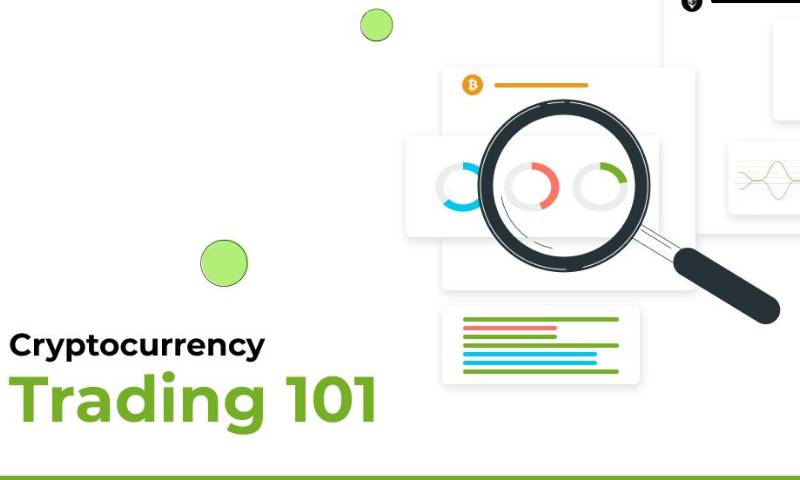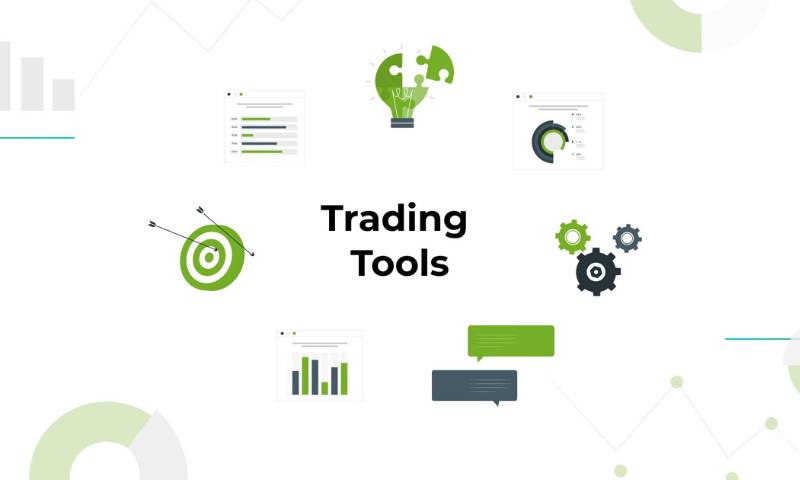Diving into the world of digital currency can be like finding a hidden trove in the deep web—an exciting but complex frontier. How to use crypto tools for beginners need not be a head-scratcher. I’ll guide you through the maze. Whether setting up your wallet, making that first exciting transaction, or growing your investments wisely, each step is packed with crucial know-hows. With my help, master the basics and keep your crypto journey secure against the virtual sea of scams and sharks. Ready to become savvy in crypto? Let’s unlock that door together!
Understanding the Crypto Landscape for Beginners
Grasping the Basics of Cryptocurrency and Blockchain
Jumping into the crypto world can feel like exploring a new planet. I get it. But fear not! Think of cryptocurrencies as digital cash. This cash, however, does not come from banks. It’s all online and works using a super-smart system called “blockchain.” Imagine blockchain as a digital ledger that no single person controls. Super cool, right?
Blockchain works by forming chains of data blocks. Each block holds details of each crypto deal. To change a block, you’d have to mess with the whole chain. That’s why it’s super secure and tough to hack. It’s what keeps your money safe!
Now, Bitcoin is where it all began. It’s not just digital money; it’s gold. Digital gold! Bitcoin taught us we can swap cash without a bank. It paved the way for thousands of other digital currencies, like Ethereum, which lets people do even more than Bitcoin.
Understanding Bitcoin is one thing; using it is another. Often, starting small is best. Buy a bit of Bitcoin. Watch what it does. It’s like having a piece of the internet way back – you’re part of history!
Differentiating Between Prominent Cryptocurrencies
Bitcoin glitters, but it’s not the only coin out there. You’ve got altcoins like Litecoin and Ripple too. They are like the sidekicks to Bitcoin’s super hero. Each one has its own powers and uses.
Ethereum, though, is more than a coin; it’s a whole network. Think of it as a giant computer that everyone can use at the same time. On it, people can build apps and create agreements that run exactly as programmed. No fakes, no frauds – that’s the promise.
Setting up a digital wallet is step one to join this world. Your wallet holds your coins so you can use or swap them like money. You’ve got to keep your wallet safe – your crypto cash depends on it!
Crypto wallets explained is like learning how to drive. At first, you’ll need to learn the basics. But soon you’ll be cruising the crypto streets with ease.
So, how do you keep your crypto safe? Keep your wallet’s key secret – it’s like the PIN to your bank card. If someone gets it, they can take your coins. And beware of scams. If a deal sounds too good to be true, walk away. Chances are, it’s a trap!
By taking little steps and learning the basics – like how blockchain and coins work, setting up your wallet, and keeping your coins safe – you’ll be on your way to mastering the crypto tools. You’ll be buying your first Bitcoin and making smart moves in no time.
Learning is power, and understanding how to navigate this new digital money realm gives you just that. Ready to dive in? Let’s go get that digital gold!
Setting Up Your First Crypto Wallet
Choosing the Right Crypto Wallet for Your Needs
To start using crypto, you need a wallet. A wallet holds your digital cash. Think of it like a digital bank account. Wallets come in many forms. Some live online, some on your computer, and others on a small device or a piece of paper. Each type has its pros and cons.
Online wallets are easy to use. They let you access your crypto from anywhere with internet. But, since they’re online, they can be hacked. Computer wallets give you more control. But if your computer dies without a backup, so does your money. Hard wallets, like a USB, have tight security. They hold your crypto offline, so hackers can’t reach them. They’re great but can get lost like your socks in the laundry.
When picking a wallet, think about how you’ll use it. Will you trade a lot or just keep your crypto safe? Do you want to access it on the go or lock it up tight? Answering these will guide you to the right choice.
The Process of Securing Your Crypto Assets
Security is a big deal in the crypto world. It’s not like a lost credit card that you can cancel. If your crypto is stolen, saying goodbye is tough. So better safe than sorry. Here’s how to lock down your digital gold.
First, you need a strong password. Not your pet’s name or your birthday. Make it tough to guess. Mix letters, numbers, and symbols. Use different passwords for each crypto service you use. It gets tricky to remember them all, so consider a password manager.
Next up, two-factor authentication, or 2FA for short. This adds another step to log in. Usually, it’s a code sent to your phone. Even if hackers get your password, without the code, they can’t get in.
Also, beware of phishers. No, not the ones with fishing rods. Cyber-thieves. They trick you into giving up passwords. They might send fake emails or set up fake websites. Always check who’s sending an email or the web address of a site.
Lastly, back up your wallet. If it’s digital, copy it to several places, like another computer or a USB. If it’s a hardware wallet, write down the recovery phrase. This phrase is like a master key. It can bring your wallet back from digital doom. Keep it safe like a treasure map.
And there you go. Now you know the ropes of wallet choice and security. Stay safe, and happy crypto-ing!
Making Your First Crypto Transaction
Navigating Crypto Exchanges and Buying Bitcoin
Diving into crypto starts with buying some. New to this? No problem. Let’s pick a crypto exchange first. This is like a digital marketplace. You’re going to use real money to buy Bitcoin here. Research is key. Look up “crypto exchanges for new users”. Find one with good reviews and easy steps to start.
Got an exchange in mind? Great. Next up, create your account. This will need some personal info and a secure password. Make sure to keep this info safe. Now, to buy Bitcoin, link a payment method. This can be a bank account or a credit card.
Alright, ready to buy? Let’s do it in small steps to keep it simple. Decide how much Bitcoin you want to start with. Don’t go all in at once. Buy just a little. Watch what happens. Learn as you go. This turns you from a beginner into a smart buyer over time.
Sending and Receiving Cryptocurrencies Safely
Now, let’s learn to send and receive crypto. These basics are important for keeping your digital coins safe. First, you need a crypto wallet. Think of it as your digital pocket for coins. “Setting up a digital wallet” guides will help you here. Once setup, your wallet protects your money with a private key. Guard this key like treasure.
Ready to send Bitcoin? You’ll use your wallet’s sending feature. Type in the receiver’s wallet address exactly. It’s a long mix of letters and numbers. Double-check it. One mistake could mean sending it to the wrong place, and there’s no undo button here.
Receiving Bitcoin is easier. Give the sender your wallet address. They’ll use that to send Bitcoin to you. And remember, every transaction is recorded on the blockchain. This is the ledger technology for newbies I mentioned before. It keeps a public record of all the swaps of coins. So yes, your transaction is secure and noted.
In both cases, sending or receiving, a tiny fee is charged. This pays the people who keep the system running smoothly. They’re called miners.
Learning “cryptocurrency basics for beginners” might seem tough at first, but hang in there. Each step teaches you more. And congrats, you’ve just made a huge leap! You’ve gone from asking “What is Ethereum?” to making your first move in the crypto world. Keep learning, keep practicing, and always stay safe.
Growing and Protecting Your Crypto Investment
Basic Strategies for Crypto Investment and Portfolio Management
When you start with crypto, it’s like entering a big forest. Each step should be thought out. To keep your investments growing and safe, follow these tips. First, know what you’re buying. Is it Bitcoin, or another coin like Ethereum? Learn how these work and why they’re unique.
Diving into crypto tools and apps also helps. They show you market trends and analysis. This lets you make smarter choices. Remember, there’s more than Bitcoin. Altcoins can be part of a good mix in your portfolio. This spreads risk and could lead to better wins. But don’t just guess. Research is key.
Managing your collection of coins means keeping an eye on them. Use apps that help you see how they’re doing. A big tip: don’t put all your eggs in one basket. Spread them out. And always, always have a plan for when to sell.
Recognizing and Avoiding Common Crypto Scams and Frauds
Scams are everywhere. But don’t worry. If you know what to look for, you can stay safe. Fake emails or messages that seem like they’re from a crypto company are common. They trick you into giving your secrets away. Never share your keys or codes with anyone.
Watch out for big promises too. Quick, easy money in crypto is rare. If a deal sounds too good to be true, it is. Be extra careful with new coin offers, or ICOs. Some are real, but many just take your cash and vanish.
To avoid trouble, stick to well-known wallets and exchanges. Check reviews and find ones people trust. Set up your wallet with care. Strong passwords and backup codes are a must. They’re your money’s shield.
Also, always double-check addresses when you send coins. One wrong letter means your coins could be lost for good. And talk to others who invest. Learn from them. They were beginners once too.
By using simple tools and staying sharp, your crypto journey can be exciting and safe. Take your time, learn, and grow your investment step by step.
Okay, let’s wrap this up. We walked through the crypto basics, setting up a wallet, making transactions, and looking after your coins. Remember, crypto is more than tech talk—it’s your money, so keep it safe. Choosing the right wallet takes time, but it’s worth it. When you’re buying or trading, take it slow. Be sure you’re on a legit exchange. And once you start growing that portfolio, stay sharp. Scams are real, and they can wipe you out. So do your homework, use your head, and you’ll do just fine. Dive in, but keep your eyes open. It’s a wild world of crypto out there!
Q&A :
What are crypto tools, and why are they important for beginners?
Crypto tools encompass a broad range of applications, platforms, and resources designed to make dealing with cryptocurrency more accessible and secure for users. For beginners, these tools are vital as they help navigate through buying, selling, storing, and trading cryptocurrencies safely. Understanding how to use these tools is crucial for protecting investments and making informed decisions in the crypto space.
How can beginners choose the right crypto tools to start with?
Beginners should focus on selecting user-friendly and highly recommended tools that suit their needs. Start with a reputable cryptocurrency wallet for storing your digital assets securely. Then, look into exchanges with a straightforward user interface for trading. Resources for market tracking and community forums can also be invaluable for learning and staying updated with crypto trends.
What is the first step in using crypto tools for beginners?
The first step for beginners is to set up a secure crypto wallet—either a software wallet for convenience or a hardware wallet for added security. This wallet will be used to store the cryptocurrencies that you acquire. It’s essential to research and choose a wallet that is reliable and supports the cryptocurrencies you are interested in.
Can beginners use crypto tools without extensive knowledge of blockchain?
Yes, beginners can use crypto tools without deep blockchain knowledge. Many crypto tools are designed with a user-friendly interface that abstracts complex blockchain mechanics. However, having a basic understanding of blockchain can enhance the user experience and promote better security practices while using these tools.
What are some basic safety tips for beginners using crypto tools?
For beginners, it is crucial to prioritize safety when using crypto tools. Always ensure that your devices have updated security software, use strong and unique passwords, and enable two-factor authentication for an extra layer of security. Be wary of phishing scams, and only download crypto tools from reputable sources. Keep backup copies of your keys; losing them could mean losing access to your assets.






